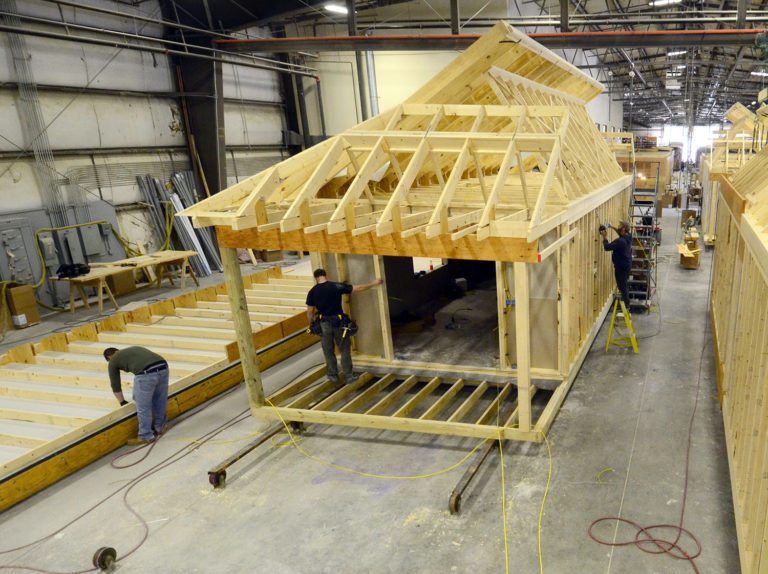The Emerging Role of Robotics in Industry
The manufacturing sector is on the brink of a transformation, with robotics poised to redefine production landscapes across the globe. In industries ranging from automotive manufacturing to electronics, robots are enhancing efficiency and reducing human labor costs. However, in the niche market of manufactured home production, where customization and variability are paramount, the integration of robotics presents unique challenges. While automation has shown promise in standard production settings, its application in environments requiring a high degree of customization reveals limitations.
The Intricacies of Customization in Home Manufacturing

photo – Huntington Homes
Manufactured homes, known for their ability to meet diverse buyer specifications, demand a level of intricacy and adaptability that current robotic technology struggles to provide. Unlike standard production lines that benefit from the uniformity and predictability conducive to robotic operations, manufactured home production requires intricate decision-making to adapt to varying customer needs. Robots, primarily designed for repetitive tasks, have yet to master the nuanced adjustments and on-the-fly decision-making processes typically handled by human workers.
Human Flexibility vs. Robotic Rigidity
One of the stark contrasts between human labor and robotic automation lies in their operational flexibility. Human workers excel in environments where they can quickly transition between diverse tasks, adapting to new challenges without the need for extensive retooling or reprogramming. Robots, however, are optimized for consistency and are less adaptable to changing workflows without significant intervention. Shifting a robot’s function not only requires time but also a high level of technical expertise in programming, which can disrupt production timelines.
The Economic Equation: Cost of Maintenance and Programming
The adoption of robotic technology also brings with it significant overhead costs. Maintenance and programming are critical components of robotic operation, often necessitating specialized skills that come at a premium. These additional costs can erode the labor savings anticipated from automation. For many manufacturers, the calculus of replacing human labor with robots is complicated by these ongoing expenses, which may negate the cost benefits in settings where frequent adjustments and customizations are the norms.
Navigating Integration Challenges
Integrating robotics into production lines initially designed for humans poses significant technical and financial challenges. Accommodating robotic equipment often requires substantial modifications to existing facilities, from redesigning workflows to enhancing safety measures to prevent human-robot collisions. These integration challenges can amplify costs and extend project timelines, diminishing the appeal of automation in industries heavily reliant on flexible, adaptive human labor.
Broader Impacts: Economic and Social Considerations
Beyond the factory floor, the shift toward robotics has broader economic and social implications. The displacement of workers by machines can lead to job losses and necessitate a re-skilling of the workforce, processes that are not only costly but also slow and fraught with political challenges. While automation can potentially drive down costs and increase productivity in the long run, the short-term impacts on employment and social stability are significant concerns that must be managed with strategic planning and policy support.
A Balanced Approach to Robotics in Manufacturing
In conclusion, while robotics holds the potential to revolutionize many sectors of the manufacturing industry, the unique demands of manufactured home production—with its high need for customization and flexibility—limit the practicality of widespread robotic adoption. The future of robotics in such industries may hinge on advancements in technology that can match the adaptability and decision-making prowess of human labor. Until then, manufacturers must weigh the benefits of robotic efficiency against the costs and challenges of implementing such technology in environments where human skills still prevail.
.
Gary Fleisher is a renowned blogger, consultant, and commentator on construction and housing trends, known for his insightful analysis of the industry.



